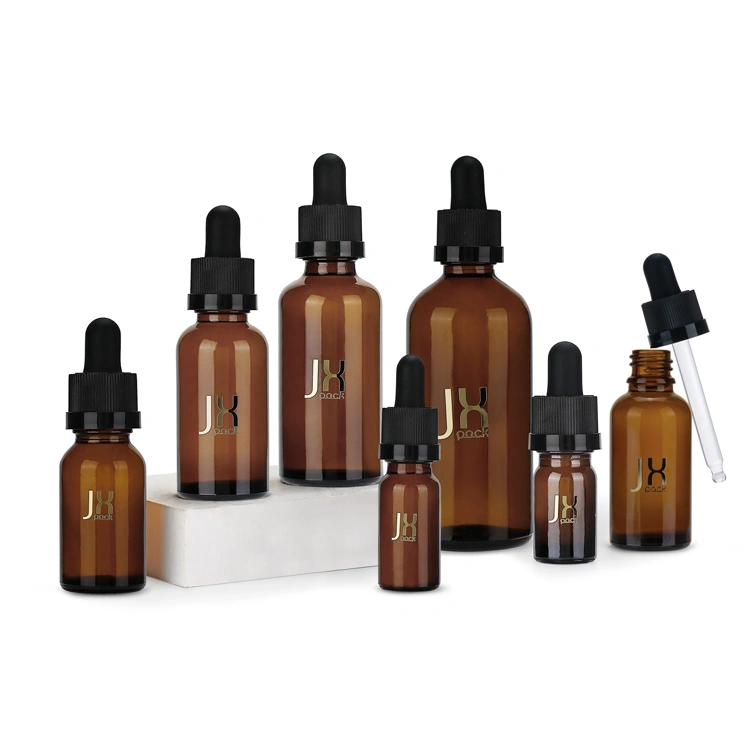Essential oil bottles are more than just containers—they are vital to preserving the delicate balance of volatile compounds that give essential oils their therapeutic potency. Proper packaging protects against environmental factors like light, heat, and oxygen, ensuring that each drop delivers maximum efficacy and a consistent user experience.
From selecting the right capacity to choosing the best material, every packaging detail influences product performance and customer satisfaction. The right bottle not only maintains the integrity of the oil but also enhances convenience and ease of use. Thoughtfully designed droppers, rollerballs, and spray nozzles ensure precise application, while eco-friendly materials reflect a brand’s commitment to sustainability.
In this guide, we’ll explore the various aspects of essential oil bottle packaging, including capacity options, material classifications, application types, and additional considerations for effective packaging. By aligning material science with user-centric design, we help brands deliver products that maintain quality, inspire trust, and meet growing consumer expectations for ethical and sustainable solutions.
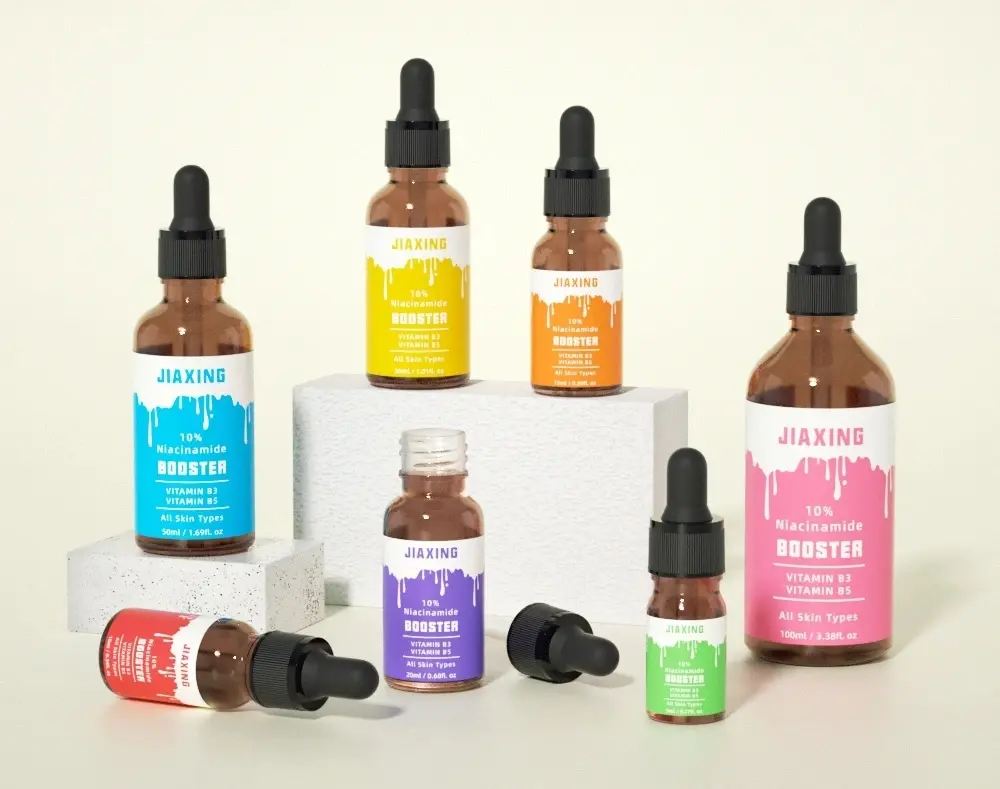
Essential Oil Bottle Capacities and Their Uses
The capacity of an essential oil bottle plays a key role in determining its practicality, from personal use to professional applications. Selecting the right size ensures that the product remains fresh, easy to use, and well-suited to the intended purpose. Here’s a closer look at the most common bottle sizes and their typical applications:
1ml to 5ml
Perfect for sample-sized oils, travel kits, and limited-use applications. These small bottles allow consumers to test new blends or carry them on the go without taking up much space. Rollerball or euro-dropper tops are often used for precise application.
10ml
The most popular size for individual consumer use. It strikes a balance between portability and value, making it ideal for rollerball and dropper bottles used in daily personal care routines or aromatherapy sessions.
15ml to 30ml
Frequently used for both personal and professional aromatherapy. These sizes are large enough to provide value while remaining compact enough for easy handling and storage. They are typically paired with pipettes, spray nozzles, or dropper caps for controlled dispensing.
50ml and above
Best suited for bulk storage, carrier oils, and refills. Larger bottles reduce packaging waste and improve cost efficiency for customers who use essential oils regularly. Screw caps, dispensing pumps, and induction seals are common for this size to maintain product integrity over time.
Understanding the right size helps manufacturers and brands cater to various customer needs while optimizing storage, distribution, and cost efficiency. By offering a thoughtful range of capacities, brands can enhance user convenience while maintaining product quality and consistency.
People also ask, “How many drops of essential oils are in the bottle?”
We found: a 5 ml bottle typically holds about 100 drops, making it ideal for sample sizes and trial packs; a 10 ml bottle contains around 200 drops, which suits rollerball or dropper applications for personal use; a 15 ml bottle holds approximately 300 drops, making it a versatile option for both personal and professional aromatherapy; a 30 ml (1 oz) bottle holds about 600 drops, commonly used for larger personal blends and retail products; and a 1 oz bottle is roughly equivalent to 30 ml, so it also holds around 600 drops, providing a steady supply for frequent use.

Material Classification of Essential Oil Bottles
The material of an essential oil bottle directly impacts its durability, UV protection, and ability to maintain the oil’s purity over time. Essential oils are highly concentrated and reactive, so selecting the right material is crucial to prevent contamination, degradation, and loss of therapeutic properties. Here’s a breakdown of the most commonly used materials and their benefits:
Glass Bottles
- The preferred choice for essential oils due to their non-reactive nature and ability to preserve the purity of oils.
- Amber Glass – Blocks over 97% of UV light, protecting volatile compounds from degradation. Ideal for citrus and floral oils.
- Cobalt Blue Glass – Provides moderate UV protection while enhancing the bottle’s aesthetic appeal.
- Frosted Glass – Offers a premium look while protecting oils from light exposure.
Plastic Bottles
- Lightweight and shatterproof, plastic bottles offer convenience and portability.
- PET (Polyethylene Terephthalate) – Resistant to essential oil degradation and prevents microplastic leaching. Suitable for diluted blends and sprays.
- HDPE (High-Density Polyethylene) – More chemically resistant than PET, making it ideal for citrus and medicinal oils.
- Sugarcane-Derived HDPE – Eco-friendly alternative with the same chemical resistance as traditional HDPE but with a lower carbon footprint.
Aluminum Bottles
- Naturally opaque and UV-resistant, aluminum bottles provide complete protection from light and oxidation.
- Lined with a food-grade epoxy or BPA-free coating to prevent chemical interaction with the oils.
- Lightweight and durable, aluminum is ideal for travel, professional use, and bulk storage.
Each material presents unique advantages depending on the intended use and market positioning. By selecting the right material, brands can enhance product longevity, improve user experience, and align with growing consumer demands for sustainability and quality.
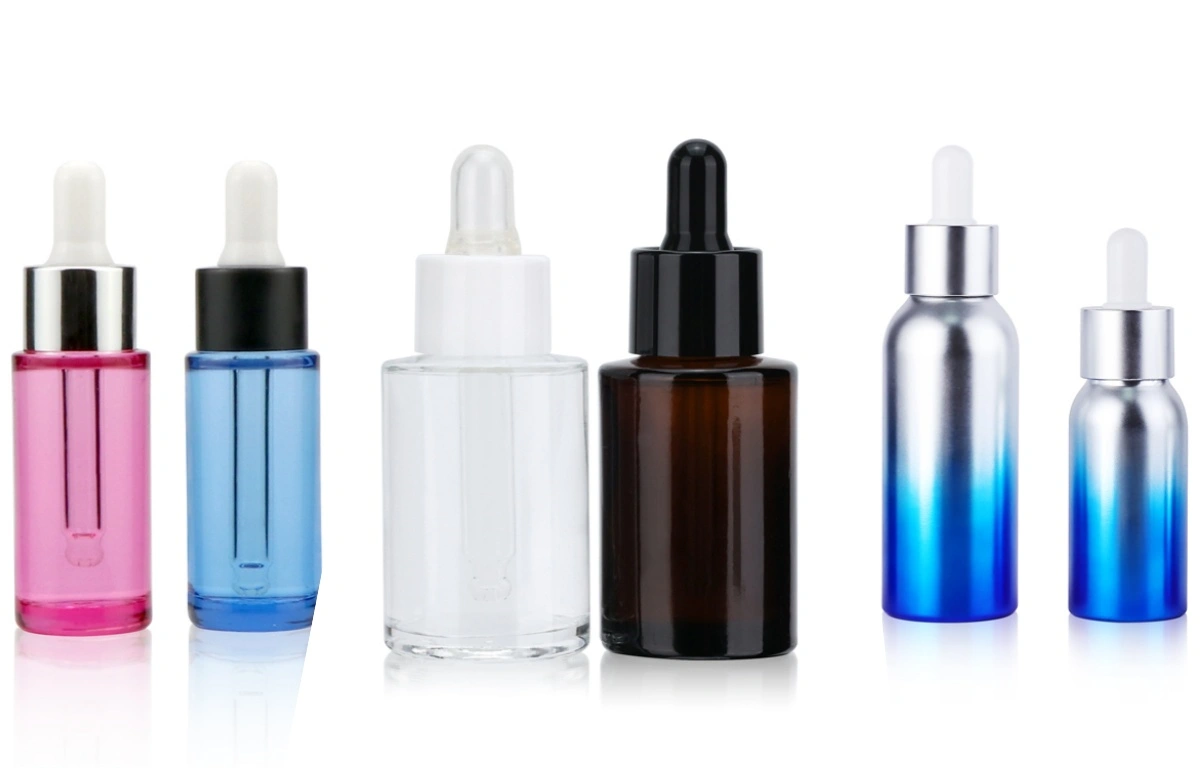
Dropper Bottles vs. Rollerball Bottles
The method of application plays a crucial role in enhancing the user experience and ensuring proper dosage and effectiveness of essential oils. Different dispensing systems cater to various product types and user needs. Here’s a closer look at the most common application methods and their benefits:
Dropper Bottles
- Designed for precise, controlled dispensing of highly concentrated oils.
- Commonly paired with euro droppers, pipettes, or silicone tips for measured dosage.
- Ideal for therapeutic use, DIY blending, and clinical aromatherapy.
- Amber glass dropper bottles are industry-standard for maintaining oil integrity.
Rollerball Bottles
- Best suited for direct skin application and diluted blends.
- Equipped with a stainless steel or glass rollerball for smooth and controlled application.
- Ideal for pulse-point oils, relaxation blends, and massage oils.
- Common sizes include 5ml and 10ml for portability and convenience.
Spray Bottles
- Suitable for light, even distribution of diluted essential oil solutions.
- Best for room sprays, facial mists, and body sprays.
- Fine-mist sprayers ensure consistent coverage while preserving product integrity.
- Plastic PET or frosted glass spray bottles offer lightweight and UV-resistant options.
Each dispensing method offers distinct advantages based on the product’s formulation and intended use. By pairing the right application system with high-quality materials, brands can improve user satisfaction, reduce waste, and enhance the overall product experience.

Sealing & Leakage Prevention
Proper sealing is essential for maintaining the integrity of essential oils, preventing leaks, and ensuring product safety during storage and transport. Essential oils are highly concentrated and volatile, making them prone to evaporation and oxidation if not properly sealed. High-quality sealing solutions not only protect the product but also enhance customer confidence and reduce waste. Here’s how effective sealing can be achieved:
Tamper-Evident Seals
- Provide visible proof of product integrity and consumer safety.
- Induction seals and shrink bands create an airtight barrier while reinforcing customer trust.
- Heat-sealed liners prevent contamination and preserve oil potency.
Drip Reducers
- Orifice reducers regulate the flow rate to ensure controlled dispensing.
- Prevent overuse and waste, especially with highly concentrated oils.
- Essential for euro dropper bottles and pipette dispensers.
Leak-Proof Caps
- Secure threading and inner liners provide an airtight seal.
- Polycone-Lined Caps – Form a tight seal with the bottle neck to prevent leaks and evaporation.
- Phenolic Resin Liners – Chemically resistant and non-reactive, making them ideal for medicinal-grade oils.
- Child-Resistant Caps – Ensure safety for products intended for home use or around children.
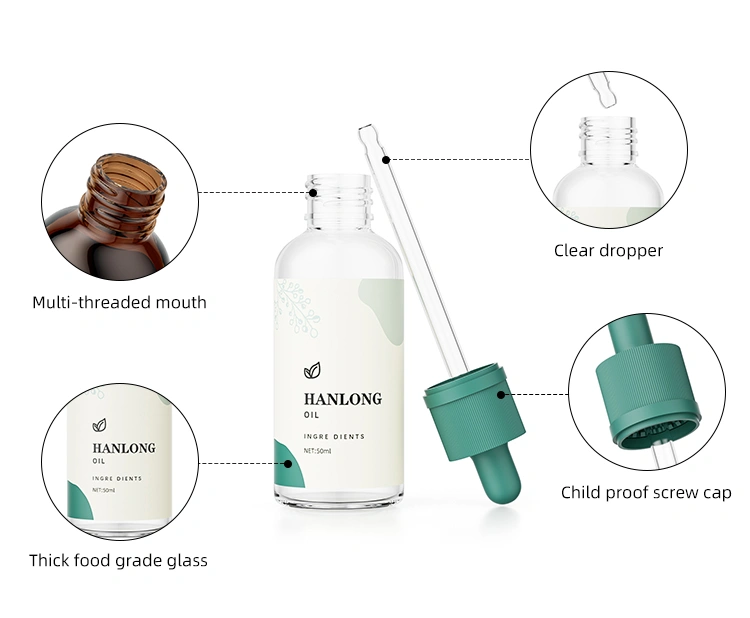
UV Protection & Light Resistance
Essential oils are composed of delicate volatile compounds that degrade when exposed to UV light and heat. This can lead to loss of potency, altered fragrance, and reduced therapeutic benefits. Proper UV protection is essential for preserving the integrity of essential oils, especially for oils containing sensitive compounds like limonene (found in citrus oils) and linalool (found in lavender). Here’s how effective packaging enhances UV protection and extends shelf life:
Glass Protection
- Amber Glass – The industry standard for essential oils due to its ability to block over 97% of UV light. This makes it ideal for storing photochemically unstable oils like citrus and floral blends.
- Cobalt Blue Glass – Provides moderate UV protection while adding aesthetic value. Cobalt blue is less effective than amber at blocking UV rays but is popular for premium branding and niche products.
- Green Glass – Less common but offers some UV resistance and is often chosen for differentiation in the market.
Plastic Protection
- HDPE and PET Plastics – High-density polyethylene (HDPE) and polyethylene terephthalate (PET) can be treated with UV-blocking additives to protect oils from light exposure. However, even with UV treatment, plastic provides less protection than glass.
- Sugarcane-Derived HDPE – Provides the same level of durability and UV protection as traditional HDPE but with up to 40% lower carbon footprint.
- Opaque Plastics – Completely opaque or frosted plastic bottles are effective in blocking light and can enhance shelf stability.
Aluminum Protection
- Aluminum Bottles – Naturally opaque and impervious to UV light, aluminum provides complete protection from light exposure. These are lined with BPA-free or food-grade epoxy to prevent chemical interaction with oils.
Storage Recommendations
- Keep in a Cool, Dark Place – Even with UV-resistant packaging, storing oils away from heat and light enhances their shelf life.
- Avoid Clear Bottles for Long-Term Storage – Clear glass allows full light penetration, making it unsuitable for most essential oils.
- Double-Layer Packaging – Some premium oils are packaged in UV-blocking glass bottles within opaque boxes for added protection.
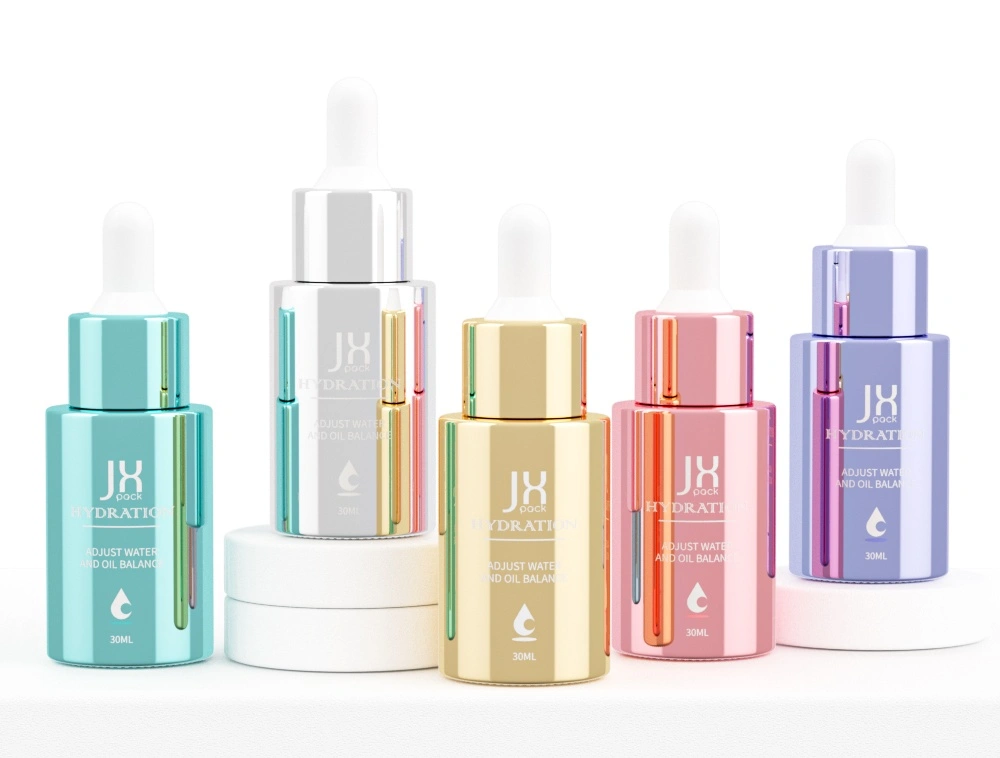
Labeling & Branding Considerations
An essential oil bottle’s label is more than just a visual element—it serves as a key touchpoint for customer trust, product identification, and regulatory compliance. High-quality labeling enhances product perception and protects the brand’s reputation.
Material and Adhesive Quality
- Oil-Resistant Labels – Essential oils can dissolve low-quality adhesives and inks, causing labels to peel, fade, or stain. Laminated or coated labels resist oil penetration and maintain their appearance over time.
- Waterproof and Smudge-Proof Labels – Vinyl, polyester, or synthetic paper labels provide resistance to water, oil, and wear.
- Heat-Resistant Labels – For oils that may be exposed to temperature fluctuations during shipping or storage.
Design and Readability
- Minimalist and Clear Design – Clean, easy-to-read fonts and contrasting colors improve shelf visibility and consumer recognition.
- Tactile Finishes – Embossing, raised ink, and matte coatings create a premium feel and enhance brand differentiation.
- Color Coding – Using different colors for oil types (e.g., blue for calming oils, green for medicinal oils) helps consumers identify products at a glance.
Legal and Regulatory Compliance
- INCI (International Nomenclature of Cosmetic Ingredients) – Ingredients must be listed using standardized names to meet global market requirements.
- Allergen Warnings – Labels should identify potential allergens and include dilution guidelines.
- Country-Specific Standards – Products sold in the US, EU, and Asia must meet region-specific regulations on labeling, safety, and recyclability.
Customization Options for Businesses
Customization strengthens brand identity and enhances consumer recognition. Personalized packaging helps products stand out in a competitive market and creates a unique customer experience.
Bottle Shapes and Sizes
- Custom Molds – Creating a unique bottle shape sets a product apart on the shelf. Tapered, round, or square designs can reflect the brand’s identity.
- Specialty Sizes – Offering non-standard sizes (e.g., 12ml or 75ml) allows brands to fill gaps in the market.
Finishes and Textures
- Frosted Glass – Adds a matte finish that elevates the look and feel of the product.
- Gradient or Ombre Coloring – Creates a high-end appearance while reinforcing brand identity.
- Metallic Coatings – Gold or silver accents on caps or bottles create a luxury aesthetic.
Engraving and Embossing
- Logo Embossing – Raised or etched logos on glass or metal create a tactile brand connection.
- Laser Engraving – Permanent and precise branding method for aluminum or glass bottles.
Custom Caps and Dispensers
- Wooden or Bamboo Caps – Eco-friendly and natural-looking caps align with sustainability goals.
- Silicone Dropper Tips – Soft-touch dropper tips improve precision and comfort in use.
- Pump and Spray Options – Offering a range of application methods increases product versatility.
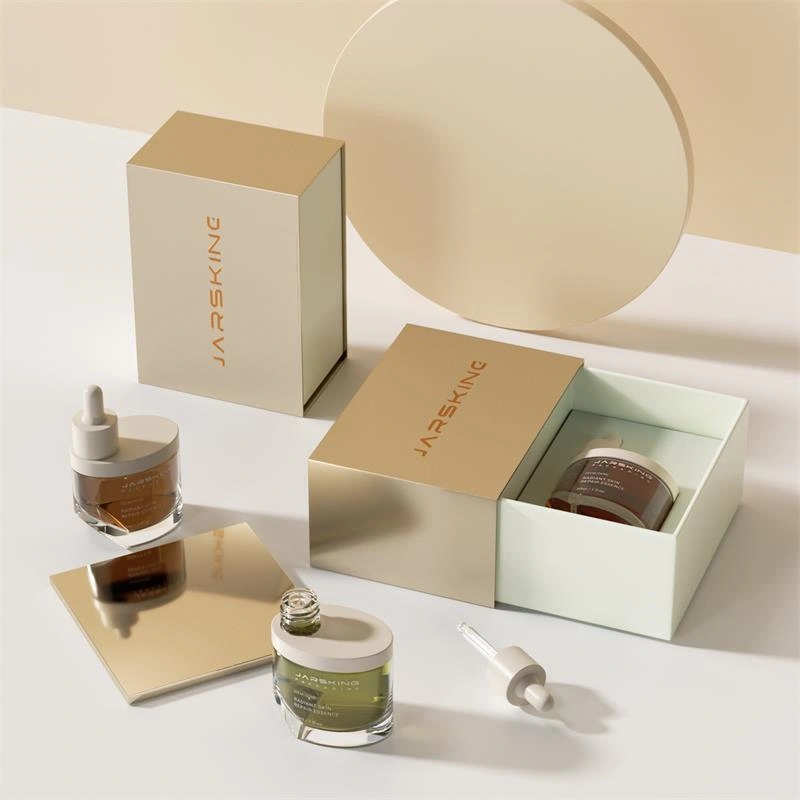
Sustainability & Eco-Friendly Packaging
Sustainability is no longer just a trend—it’s a necessity. Modern consumers expect brands to offer eco-conscious solutions that reduce waste and environmental impact without compromising quality.
Recycled and Renewable Materials
- PCR (Post-Consumer Recycled) Glass – Contains up to 85% recycled content while maintaining strength and clarity.
- Sugarcane-Based HDPE – Renewable and biodegradable while providing the same durability as traditional HDPE.
- Compostable Packaging – Biodegradable inks and plant-based labels reduce landfill waste.
Refillable and Reusable Solutions
- Refill Stations – Brands can encourage refilling to minimize single-use packaging.
- Reusable Bottles – Sturdy glass and aluminum bottles designed for multiple refills.
Minimalist Packaging
- Eliminating Plastic Shrink Wrap – Switching to paper-based seals and tapes reduces plastic use.
- Slimmer Designs – Thinner glass and lighter caps reduce material usage without sacrificing protection.
Air-Tight & Vacuum Packaging for Extended Shelf Life
Essential oils are highly sensitive to oxygen and evaporation. Advanced sealing techniques improve product longevity and preserve potency by minimizing exposure to air and environmental contaminants.
Vacuum-Sealed Bottles
- Air Removal Before Sealing – Removing air from the bottle creates a vacuum that prevents oxidation and evaporation.
- Maintains Purity – Preserves the original chemical composition of the oil for longer shelf life.
Nitrogen Flushing
- Inert Atmosphere Creation – Flushing bottles with nitrogen before sealing displaces oxygen, creating a protective barrier against oxidation.
- Preserves Aroma and Potency – Prevents scent degradation and maintains therapeutic properties.
- Ensures evaporation rates remain below 0.001g/day, maintaining oil efficacy for 18–24 months.
Polycone-Lined and Induction-Sealed Caps
- Polycone Liners – Form a tight seal with the bottle neck to prevent leaks and maintain pressure.
- Induction Sealing – Uses heat and pressure to bond a foil seal to the bottle opening, providing a tamper-proof and airtight barrier.
- Pressure-Sensitive Liners – Create an immediate seal upon capping without the need for heat or adhesives.
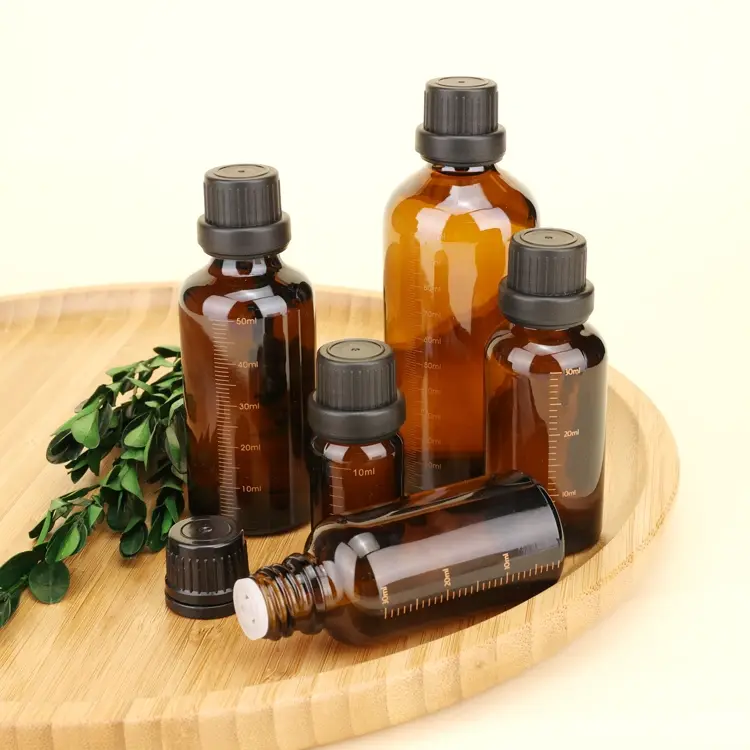
Othilapak: Premium Cosmetic Packaging Solutions for Performance and Sustainability
Othilapak, as a cosmetic packaging division from Jarsking Group, offers tailored solutions that enhance product quality, user experience, and brand differentiation. Specializing in glass, plastic, and aluminum containers, we provides packaging for a range of applications, including serums, creams, oils, and sprays. Advanced options like airless pump bottles, dropper bottles, and rollerball applicators cater to specific product needs while ensuring controlled dispensing and product integrity. The company also prioritizes high-performance sealing—such as induction seals, polycone-lined caps, and nitrogen flushing—to preserve product potency and extend shelf life. Premium customization options like embossing, frosted glass, and metallic finishes allow brands to create a distinct market presence.
Sustainability is at the core of Othilapak’s approach, offering eco-friendly materials such as PCR glass, sugarcane-derived HDPE, and biodegradable plastics to reduce environmental impact. Refillable containers and minimalist designs further support sustainable practices while maintaining a premium feel. Oil-resistant labels, clear ingredient lists, and INCI-compliant designs ensure regulatory compliance and enhance customer trust. Othilapak’s ability to integrate functional design, material science, and sustainability makes it a strategic partner for brands seeking to elevate product presentation and meet evolving consumer demands.
Conclusion
Choosing the right essential oil bottle involves more than just aesthetics—it directly impacts product quality, user convenience, and brand differentiation. From selecting the ideal capacity to choosing materials that preserve potency and prevent degradation, every detail matters in maintaining the integrity of essential oils. Thoughtful application methods, such as precision dropper bottles and smooth rollerball dispensers, enhance user satisfaction and ensure proper dosing.
Effective sealing, UV protection, and leakage prevention safeguard product quality during transport and storage, reinforcing customer trust and product consistency. Meanwhile, strategic branding through durable, oil-resistant labels and custom packaging designs strengthens market presence and enhances brand identity.
As sustainability and innovative solutions continue to shape the industry, brands must stay ahead by embracing eco-friendly materials, refillable options, and minimalist designs that reduce waste. At Othilapak, we combine cutting-edge material science, functional design, and environmental responsibility to create high-quality essential oil packaging that meets the demands of today’s conscious consumers. Thoughtful packaging isn’t just a container—it’s a reflection of the product inside and the brand behind it.
